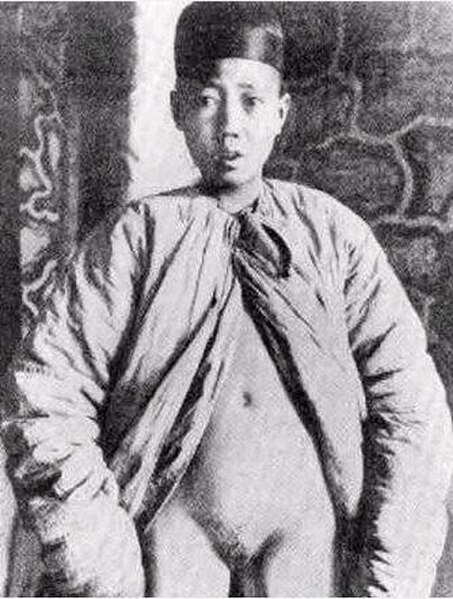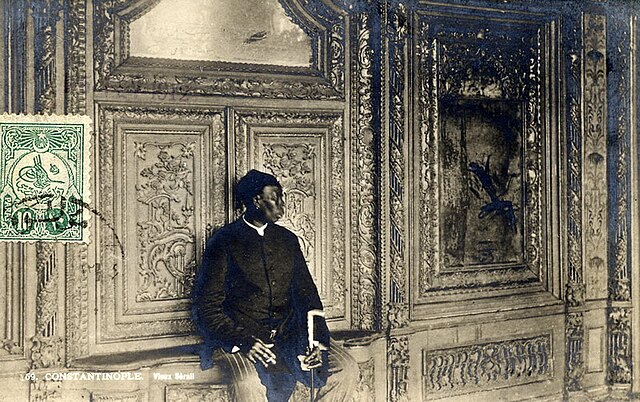A eunuch is a man who has been castrated. Throughout history, castration often served a specific social function. In China, castration included removal of the penis as well as the testicles. Both organs were cut off with a knife at the same time.
A group of eunuchs in a mural from the tomb of the prince Zhanghuai, 706 AD
A Chinese eunuch boy in 1901 during the Qing dynasty with all his genitals removed.
Han bannerwoman Yu Roung Ling
Empress Longyu with a eunuch on the right behind her and a palace maid on the left behind her
A eunuch is a male who has been castrated. Throughout history, castration often served a specific social function. The earliest records for intentional castration to produce eunuchs are from the Sumerian city of Lagash in the 2nd millennium BCE. Over the millennia since, they have performed a wide variety of functions in many different cultures: courtiers or equivalent domestics, for espionage or clandestine operations, castrato singers, concubines or sexual partners, religious specialists, soldiers, royal guards, government officials, and guardians of women or harem servants.
The Harem Ağası, head of the black eunuchs of the Ottoman Imperial Harem
A group of eunuchs. Mural from the tomb of the prince Zhanghuai, 706 AD.
Limestone wall relief depicting an Assyrian royal attendant, a eunuch. From the Central Palace at Nimrud, Iraq, 744–727 BCE. Ancient Orient Museum, Istanbul.
Chief Eunuch of Ottoman Sultan Abdul Hamid II at the Imperial Palace, 1912







